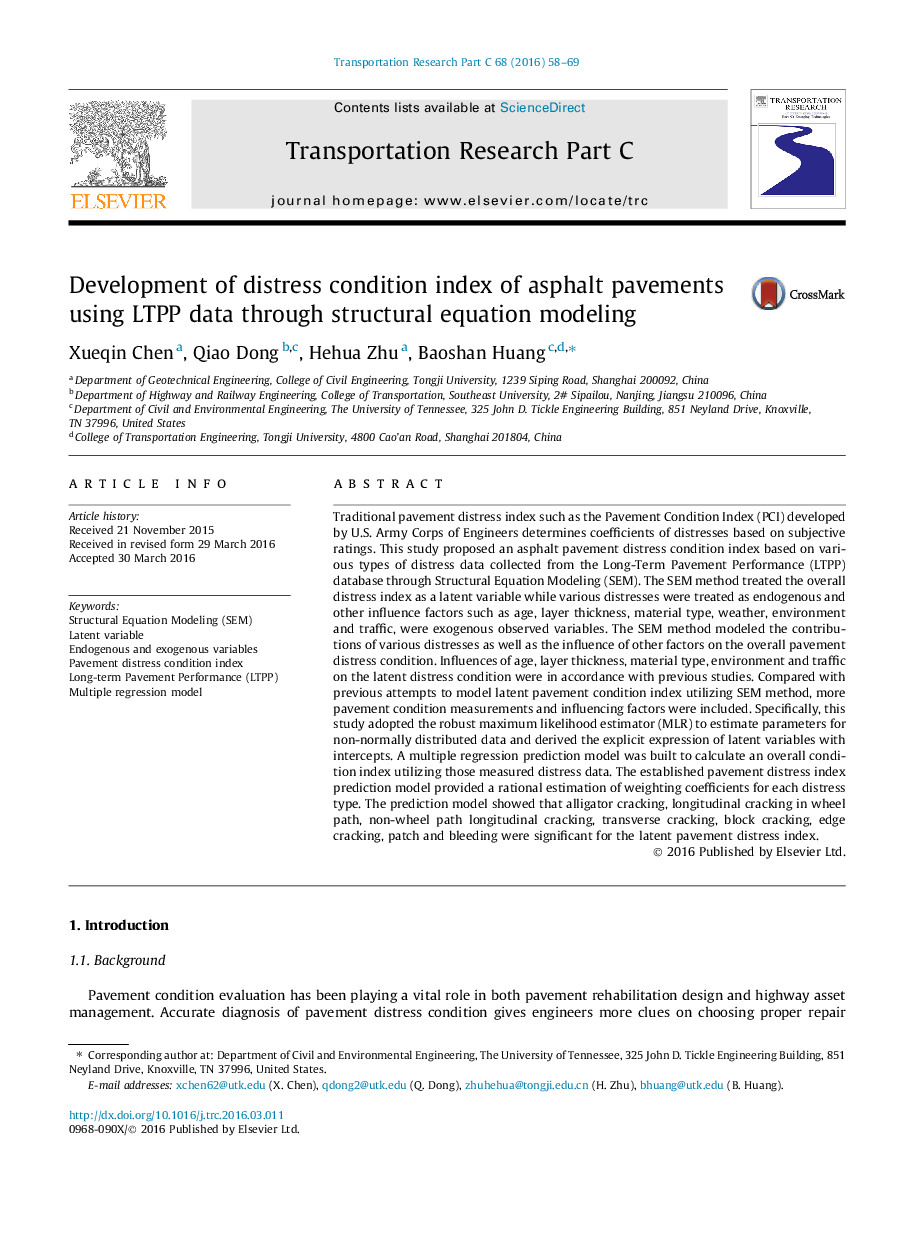| کد مقاله | کد نشریه | سال انتشار | مقاله انگلیسی | نسخه تمام متن |
|---|---|---|---|---|
| 6936344 | 868856 | 2016 | 12 صفحه PDF | دانلود رایگان |
عنوان انگلیسی مقاله ISI
Development of distress condition index of asphalt pavements using LTPP data through structural equation modeling
دانلود مقاله + سفارش ترجمه
دانلود مقاله ISI انگلیسی
رایگان برای ایرانیان
کلمات کلیدی
موضوعات مرتبط
مهندسی و علوم پایه
مهندسی کامپیوتر
نرم افزارهای علوم کامپیوتر
پیش نمایش صفحه اول مقاله

چکیده انگلیسی
Traditional pavement distress index such as the Pavement Condition Index (PCI) developed by U.S. Army Corps of Engineers determines coefficients of distresses based on subjective ratings. This study proposed an asphalt pavement distress condition index based on various types of distress data collected from the Long-Term Pavement Performance (LTPP) database through Structural Equation Modeling (SEM). The SEM method treated the overall distress index as a latent variable while various distresses were treated as endogenous and other influence factors such as age, layer thickness, material type, weather, environment and traffic, were exogenous observed variables. The SEM method modeled the contributions of various distresses as well as the influence of other factors on the overall pavement distress condition. Influences of age, layer thickness, material type, environment and traffic on the latent distress condition were in accordance with previous studies. Compared with previous attempts to model latent pavement condition index utilizing SEM method, more pavement condition measurements and influencing factors were included. Specifically, this study adopted the robust maximum likelihood estimator (MLR) to estimate parameters for non-normally distributed data and derived the explicit expression of latent variables with intercepts. A multiple regression prediction model was built to calculate an overall condition index utilizing those measured distress data. The established pavement distress index prediction model provided a rational estimation of weighting coefficients for each distress type. The prediction model showed that alligator cracking, longitudinal cracking in wheel path, non-wheel path longitudinal cracking, transverse cracking, block cracking, edge cracking, patch and bleeding were significant for the latent pavement distress index.
ناشر
Database: Elsevier - ScienceDirect (ساینس دایرکت)
Journal: Transportation Research Part C: Emerging Technologies - Volume 68, July 2016, Pages 58-69
Journal: Transportation Research Part C: Emerging Technologies - Volume 68, July 2016, Pages 58-69
نویسندگان
Xueqin Chen, Qiao Dong, Hehua Zhu, Baoshan Huang,